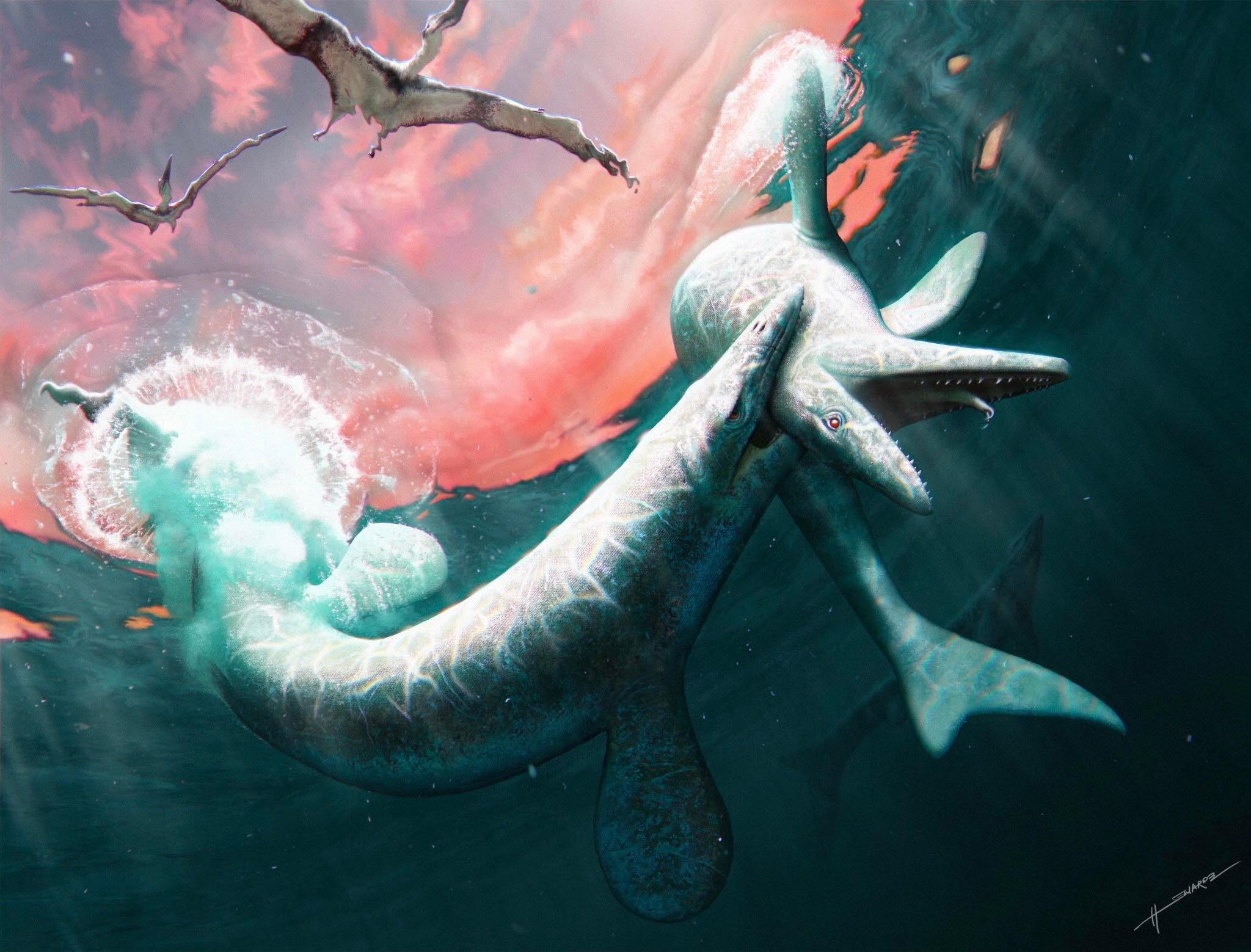
The discovery of Jörmungandr walhallaensis, a new mosasaur species, offers critical insights into the evolution of these ancient marine lizards and the geologic history of late Cretaceous North America. Found near Walhalla, North Dakota, this transitional species fills a gap between primitive and more advanced mosasaurs and suggests new details about their aquatic adaptations and lineage. A reconstruction of two Jormungandr walhallaensis mosasaurs fighting. Credit: Henry Sharpe
Jormungandr, a colossal 24-foot-long marine lizard that lived 80 million years ago, is found to be a transitional species between two well-known mosasaurs.
Scientists have recently identified a new
A line drawing of the skull of Jormungandr walhallaensis. Credit: Henry Sharpe
The Fossil Discovery
The fossil on which the study is based was discovered in 2015, when researchers excavating in the northeastern part of North Dakota found an impressive specimen: a nearly complete skull, jaws, and cervical spine, as well as a number of vertebrae.
After extensive analysis and surface scanning of the fossil material, Zietlow and her collaborators found that this animal is a new species with a mosaic of features seen in two iconic mosasaurs: Clidastes, a smaller and more primitive form of mosasaur; and Mosasaurus, a larger form that grew to be nearly 50 feet long and lived alongside Tyrannosaurus rex. The specimen is estimated to be about 24 feet long, and in addition to flippers and a shark-like tail, it would have had “angry eyebrows” caused by a bony ridge on the skull, and a slightly stumpy tail that would have been shorter than its body.
Evolutionary Insights and Geological Significance
“As these animals evolved into these giant sea monsters, they were constantly making changes,” Zietlow said. “This work gets us one step closer to understanding how all these different forms are related to one another.”
The work suggests that Jormungandr was a precursor to Mosasaurus and that it would have lived about 80 million years ago.
“This fossil is coming from a geologic time in the United States that we don’t really understand,” said co-author Clint Boyd, from the North Dakota Geological Survey. “The more we can fill in the geographic and temporal timeline, the better we can understand these creatures.”
Coauthor Nathan Van Vranken from Eastern West Virginia Community and Technical College added, “The tale of Jormungandr paints a wonderful picture and helps contribute to our understanding of the northernmost regions of the interior seaway, especially with the mosasaurs, and discoveries such as these can pique scientific curiosity.”
Reference: “Jormungandr walhallaensis: a new mosasaurine (Squamata: Mosasauroidea) from the Pierre Shale Formation (Pembina Member: Middle Campanian) of North Dakota” by Amelia R. Zietlow, Clint A. Boyd and Nathan E. Van Vranken, 30 October 2023, Bulletin of the American Museum of Natural History.
DOI: 10.5531/sd.sp.60






